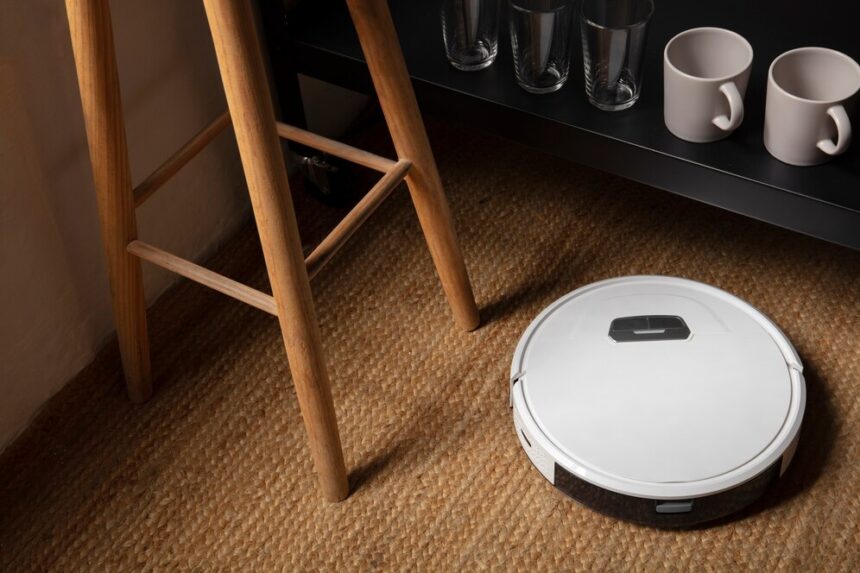Choosing a self-emptying robot vacuum is a thoughtful investment in maintaining a clean home with minimal effort. These advanced devices offer convenience and efficiency, but not all models are created equal. Understanding the key considerations will help you select the perfect vacuum tailored to your needs. This guide will explore crucial aspects such as suction power, navigation technology, battery life, and maintenance, ensuring you make an informed decision.
Why Does Suction Power Matter for a Robot Vacuum?
A robot vacuum’s ability to effectively clean your home heavily depends on its suction power. Without sufficient suction, even the most advanced navigation system won’t ensure a thorough clean.
Importance of Suction Power in Effective Cleaning
Suction power is the main factor influencing a robot vacuum’s cleaning performance. Strong suction is essential for picking up dirt, dust, and debris, especially from carpets and rugs. Robot vacuums with higher suction ratings can more effectively pull embedded particles from deep within fibers, leading to a more thorough clean. Seek models equipped with adjustable power settings, providing the flexibility to increase suction for tougher areas or conserve energy on hard floors.

Evaluating Cleaning Performance Across Different Floor Types
Different floor types pose varied cleaning challenges. On hardwood or tile floors, robot vacuums require less suction power but need to efficiently collect fine dust and larger debris. For carpets and rugs, high suction is critical to lift dirt from beneath the surface. Consider models with sensors that automatically adjust suction levels based on floor type. This feature ensures optimal performance and efficiency, regardless of the flooring material.
How Does Navigation and Mapping Improve Cleaning?
Navigation technology determines how efficiently a robot vacuum covers your home. A model with smart mapping capabilities not only cleans faster but also ensures no area is left untouched.
Role of Advanced Navigation Systems in Efficient Cleaning
Effective navigation is pivotal for a robot vacuum’s efficiency. Advanced systems, such as laser-guided navigation or visual mapping, enable the device to create accurate layouts of your home. This technology allows the vacuum to plan the most efficient cleaning path, avoiding obstacles and covering every area systematically. High-end models with sophisticated navigation can clean 20-30% faster than those with basic bump-and-go systems, delivering significant time savings.
Benefits of Accurate Mapping for Targeted Cleaning
Accurate mapping goes beyond general navigation. It plays a key role in targeted cleaning, allowing you to set specific zones for the vacuum to address. This is especially useful for high-traffic areas that accumulate more dirt or for avoiding spaces you don’t want the robot to enter. Look for models that offer virtual boundaries and room-specific scheduling, giving you full control over your cleaning routine.
What Should You Know About Battery Life and Charging?
A self-emptying robot vacuum is designed for convenience, but its efficiency depends on its battery life. The last thing you want is a vacuum that runs out of power before completing a cleaning cycle.
Assessing Battery Capacity for Larger Homes
Battery life directly affects how much area a robot vacuum can cover on a single charge. Larger homes require models with substantial battery capacities to ensure complete cleaning cycles without interruption. Consider vacuums that can operate for at least 90 to 120 minutes, sufficient for most mid to large-sized homes. Brands often specify the vacuum’s runtime, so compare these figures to your home’s needs.
Importance of Efficient Charging and Resume Functions
Efficient charging mechanisms and resume functions enhance a vacuum’s reliability. Advanced models feature quick-charging batteries and the ability to resume cleaning from where they left off after recharging. These functions prevent incomplete cleaning sessions and ensure your home remains spotless. Additionally, well-designed docking stations help maintain optimal battery health, extending the vacuum’s lifespan and maintaining peak performance.

How Important Is Dustbin Capacity and Maintenance?
A self-emptying vacuum significantly reduces the need for frequent emptying, making it a time-saving investment. However, dustbin size and maintenance requirements can impact long-term usability.
Advantages of Larger Dustbin Capacities
A key advantage of self-emptying robot vacuums is their ability to handle larger dustbin capacities, reducing the frequency of manual emptying. This feature is particularly beneficial for homes with pets or large families that generate more debris. Seek models offering larger dustbin capacities within the self-emptying base, ensuring the vacuum can operate for weeks without needing your intervention.
Ease of Maintenance and Replacement Parts Availability
Maintenance influences the long-term convenience and cost of your robot vacuum. Models designed for easy access and replacement of parts such as brushes, filters, and batteries simplify upkeep. Readily available replacement parts ensure that routine maintenance doesn’t become a hassle. Opt for well-known brands that provide comprehensive support and readily available accessories, ensuring your vacuum remains in optimal condition throughout its life.
Conclusion
Choosing the right self cleaning vacuum involves more than just picking the most expensive model. By considering factors such as suction power, navigation technology, battery life, and maintenance, you can find a vacuum that perfectly fits your needs. Understanding these features ensures that you invest in a device that will provide maximum convenience and efficiency, keeping your home clean with minimal effort on your part.










 /home/u448362301/domains/theexpotab.com/public_html/wp-content/themes/foxiz/templates/popup.php on line 167
/home/u448362301/domains/theexpotab.com/public_html/wp-content/themes/foxiz/templates/popup.php on line 167